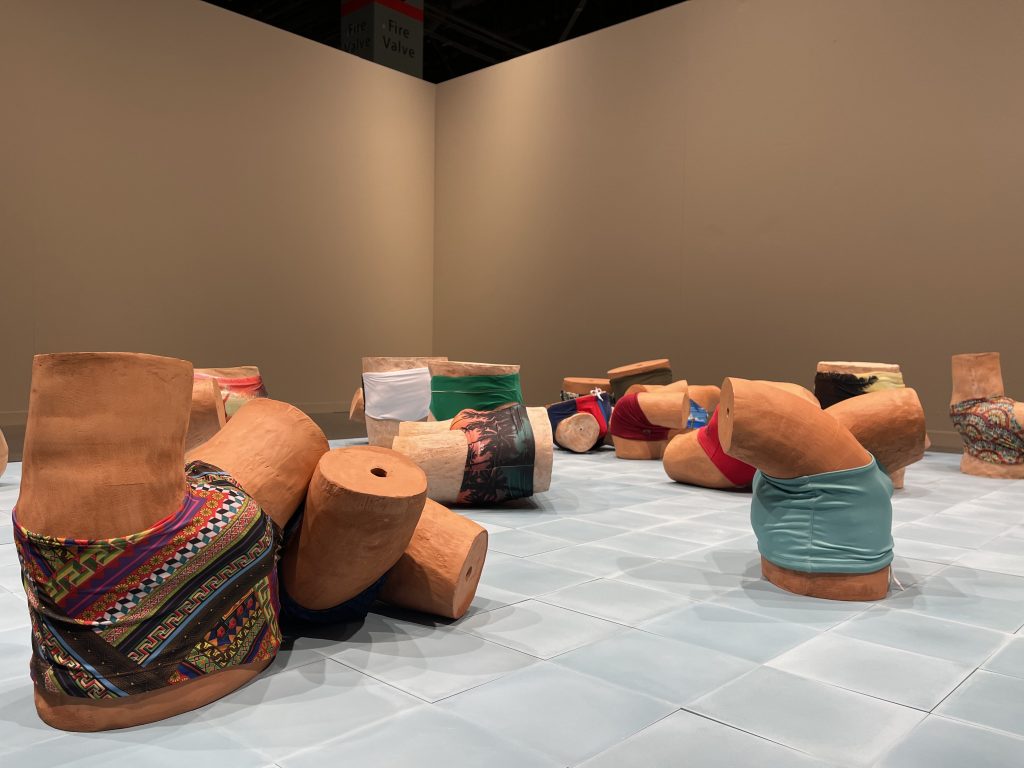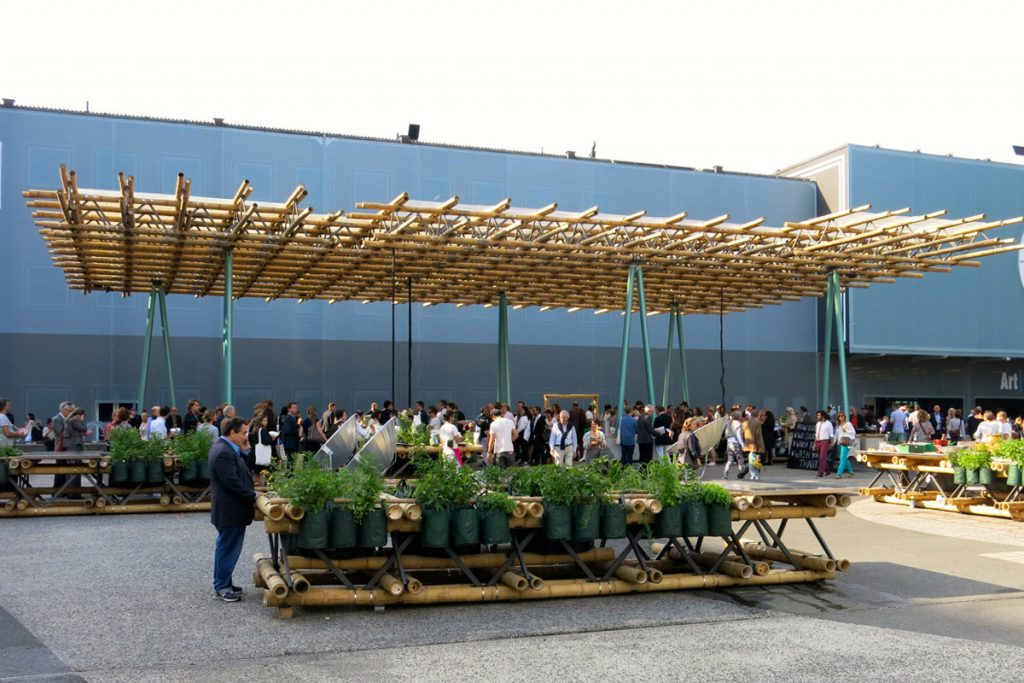Art Basel 2015: Highlights
Reoccurring themes at this year’s extravaganza, from curious chessboards to the political and personal

This year’s edition of Art Basel in Switzerland showcased a huge amount of thrilling, exciting pieces—as did the handful of fairs surrounding the central hub. Naturally, when you have over 300 galleries, showing many more artists, some themes will keep reoccurring. Below are some of our favorite connected pieces from the art fair, drawing from impactful topics we found resonant. There’s everything from classic materials to future-forward messages but their impact is resounding.
Artsy Hardbacks

In an increasingly digitized world, books might come to seem more and more like unique, tangible artworks, and more than a few pieces this year incorporated novels. American artist Sam Falls used the likeness of his favorite book, Roberto Bolaño’s “2666,” to honor his friend and god-brother Jamie with “Untitled (Books for Jamie)” (2014). The 24 imposing hardbacks that lined one wall of the room had their backs bleached in the sun, with each “book” marking a year of Jamie’s life before his untimely passing.

At the Volta 11 art fair, which also takes place during Art Basel, Barcelona’s ADN Galeria showed a piece by Eugenio Merino, in which the constitutions of a number of countries are depicted as bricks with book spines—as if they were actually written in stone.
Curious Chessboards

Two very different takes on the noble game were seen at Basel: Yayoi Kusama’s playful, cute “Pumpkin Chess Set” (2003) at the OTCA gallery at Scope art fair seemed made for fairytale creatures, with its hand painted porcelain pieces.

In stark contrast, Javier Tellez’ “Schering Chess” (2015) at Zürich-based Galerie Peter Kilchmann uses the chess board to depict the internal battlefield of mental patients. The black-and-white board evokes hospital floors, while the pre-Columbian ceramic chess pieces have been lettered to represent patients, doctors and mental disorders. Note the smooth eggs that represent the pawns.
Political and Personal

Two of the most touching artworks at the fair were on display in Art Basel’s Unlimited sector. Kader Attia’s fantastic, horrific “Arab Spring” (2014), a site-specific installation, consists of 16 broken museum showcases—and references the damage inflicted on the Egyptian Museum in Cairo. Based in Tahrir Square, the epicenter of the Arab Spring uprisings, the museum was looted and now keeps a few rooms completely empty—apart from the ruined showcases—as a reminder of the cultural and historical loss. Attia’s broken displays symbolize both the hope and the failure of the Arab Spring.

Héctor Zamora’s installation “OG-107 Scenery” (2012) establishes a similar internal unease. Zamora’s parachutes (now retired from military operations) are the result of the São Paulo-based artist hearing fighter jets conduct a tactical bombing practice, and disturb the quiet of the Arizona desert. The beauty of the parachutes—their movement resembling tranquil, floating jellyfish or sea anemones—stand in sharp contrast to their intended use. The way they strain to break free of the electric fans—never allowed to descend, as is their natural state—creates a tension absorbed by onlookers.
Classic Materials

Playing around with materials that we all recognize as “classics” was popular at Basel this year, with plenty of artists creating pieces that nodded to influential artworks from the past. Brazilian poet and artist Nuno Ramos’ “Vaso Ruim” (1998-2015), at Galeria Fortes Vilaça, consists of broken terra cotta pots filled with Vaseline, juxtaposing the permanent and the fleeting (or, in this case, melting).

One piece that definitely won’t melt, despite its appearance, is Matt Johnson’s “Creamsicle” (2015), seen at Blum & Poe‘s booth. The tempting piece is made from marble and made you feel sorry for whoever has taken the bite out of it.
Images by Cajsa Carlson












